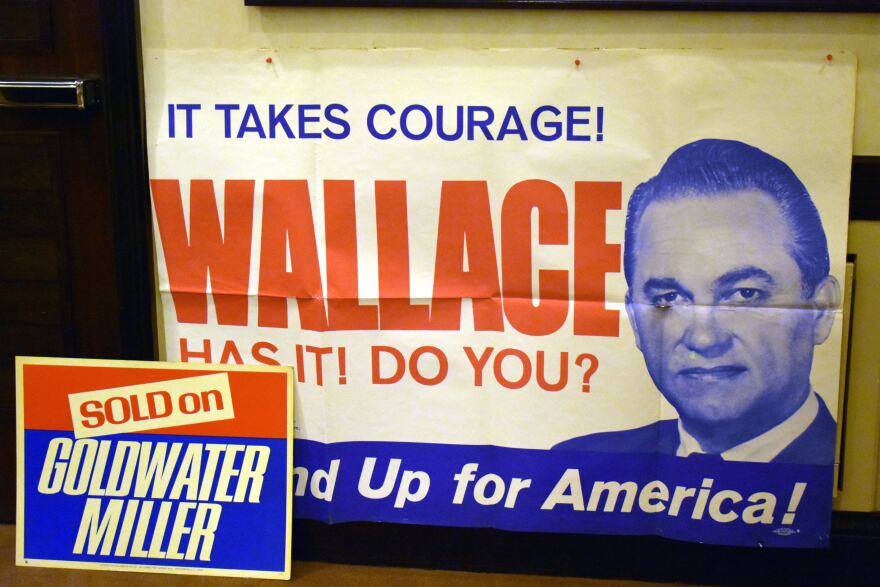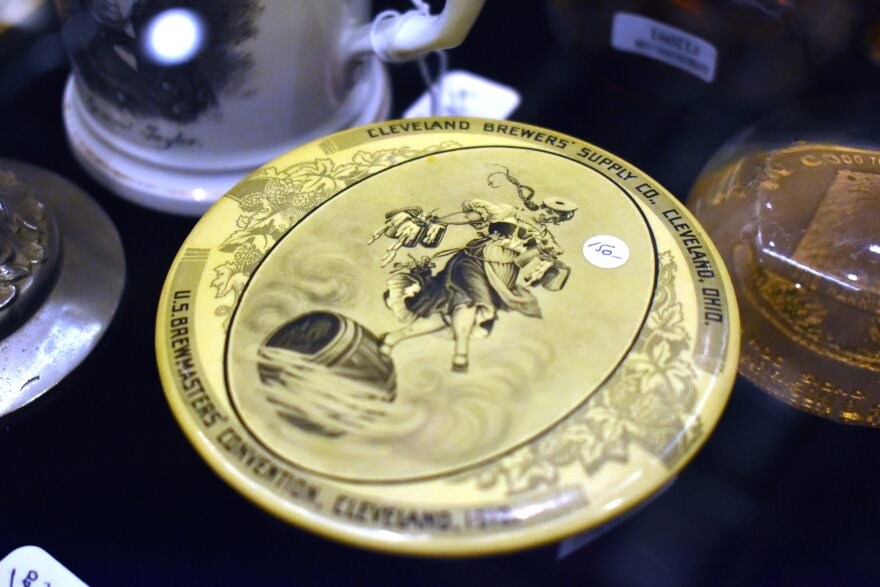










Political campaign paraphernalia is often seen as trash after an election, but for certain collectors, the memorabilia is a lifelong passion. Some believe political items like campaign buttons and bumper stickers are actually tangible pieces of both American history and culture. Our reporter Paul Boger, spoke with Adam Gottlieb from American Political Items Collectors about the hobby and why it's an important part of preserving the nation’s history.
Why is this something that should be important to people? Why is this something that should be keepsakes for people to have?
The reason to save political memorabilia is very simple. We remember our past and where we come from. Whether it’s the origins to the Teddy bear, which has connections to Teddy Roosevelt, Watergate or President Obama’s groundbreaking election to the White House, this is history that you can hold in your hand; it’s not a dusty textbook. It connects people with events and, heck, it’s a fun hobby.
It’s amazing to see the variety of color and the explosion of red, white and blue and stars when you look out at all the tables at the show. It’s overwhelming.
It’s not just political buttons. It’s pop culture buttons. It’s posters, banners, bumper stickers, photographs and in some cases ceramic. Before the invention of celluloid and the button, ways to market your candidate included all manner of material.
This sounds like something that’s uniquely American. Is that what it is?
The political button is an American original. It’s as original as baseball, the skyscraper and jazz. It’s one of those things that we can hold high.
They have buttons in other countries, but we were the originator. The first political election that had celluloid buttons was 1896, and we just celebrated the birthday of the celluloid button.
What are the most valuable items? Are these the items of the candidates that won? Didn’t win? What’s the most valuable you’ve seen?
When it comes to value, the winners are not necessarily the most valuable collectibles. In some cases, the losers can have more valuable buttons.
A good example of that is in 1920 when James Cox and a young Franklin Delano Roosevelt ran on the Democratic ticket. The Democratic Party at that time did not have a lot of resources to pay for buttons. So there are very few buttons that were made with both the pictures of Cox and Roosevelt. A lot of buttons came out with their names, like a slogan button. The buttons that have their pictures, both pictures on them, are considered quite scarce. We think of them as sort of the Holy Grail of button-collecting. In recent memory, those buttons have sold between $20,000 and $25,000. That’s for a piece of metal and celluloid the size of a nickel.
Where do you go from here? How do you spread the word of the importance?
Well, it’s very interesting. You would be surprised how many new collectors have gotten into the hobby because of the interest in both Bernie Sanders and Donald Trump, and a lot of people who collect Bernie Sanders stuff want to see what else is out there. A lot of creativity went into the manufacture of his pins. It actually rivals the creativity of George McGovern’s pins in 1972, the anti-war movement, psychedelic colors.
As far as the cultural significance, people are passionate about their candidates or their scene. There’s a lady in Santa Barbara who collects first ladies. There’s somebody who collects anti-war. There’s somebody that collects suffrage [movement]. As members of the American Political Items Collectors, we’re uniquely poised to preserve American history, display it, share it and also give people the opportunity for people to buy it.
As a note of disclosure, Reno Public Radio receives underwriting support from the American Political Items Collectors. More details can be found at more at apic.us.





